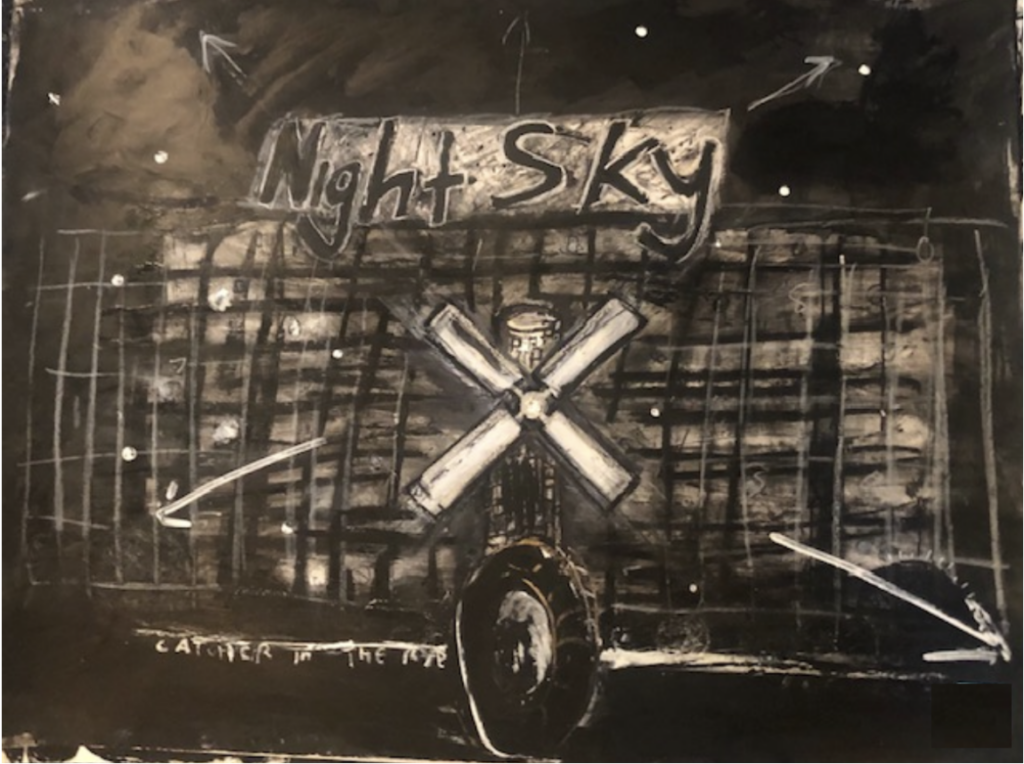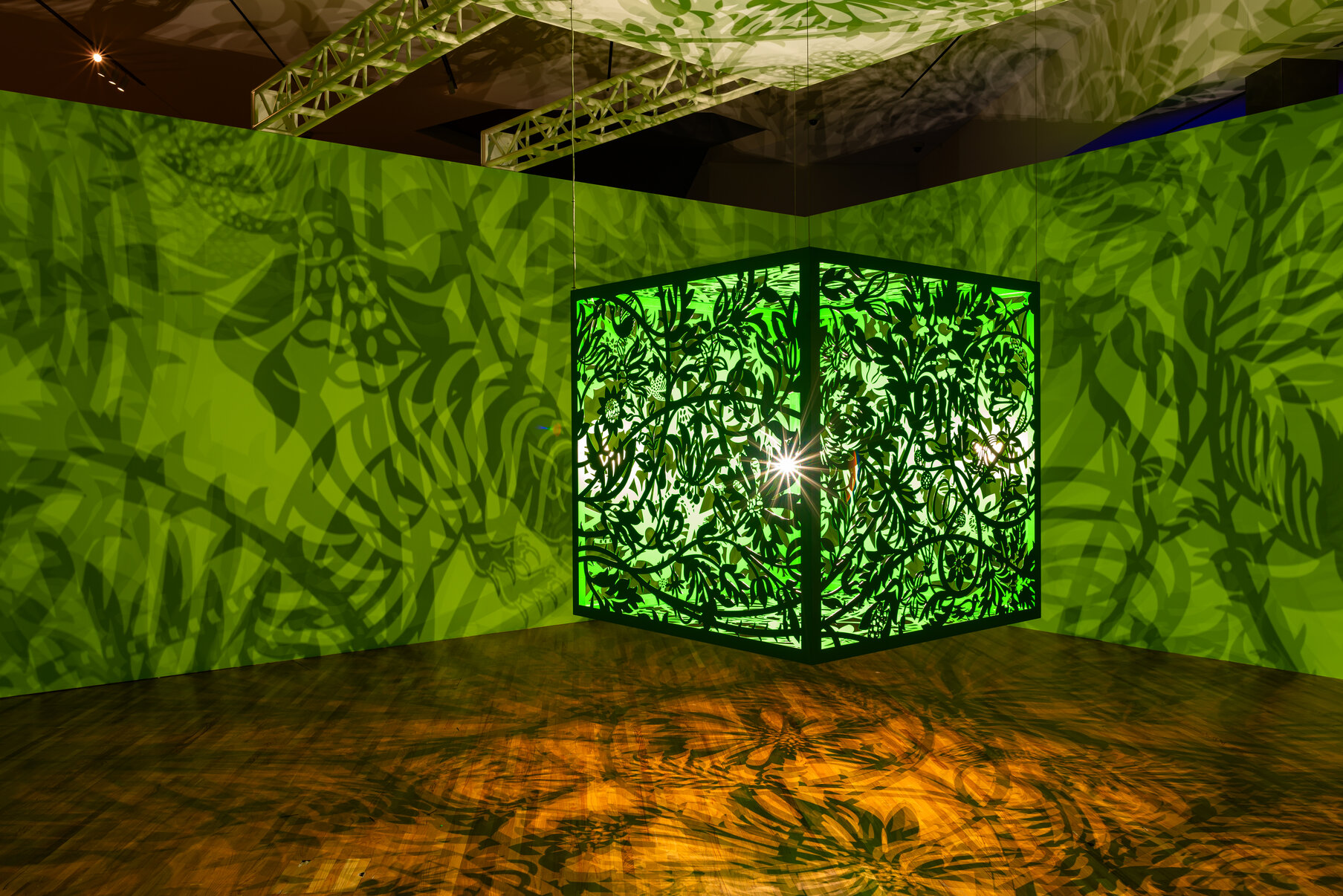by Roy Bernardi
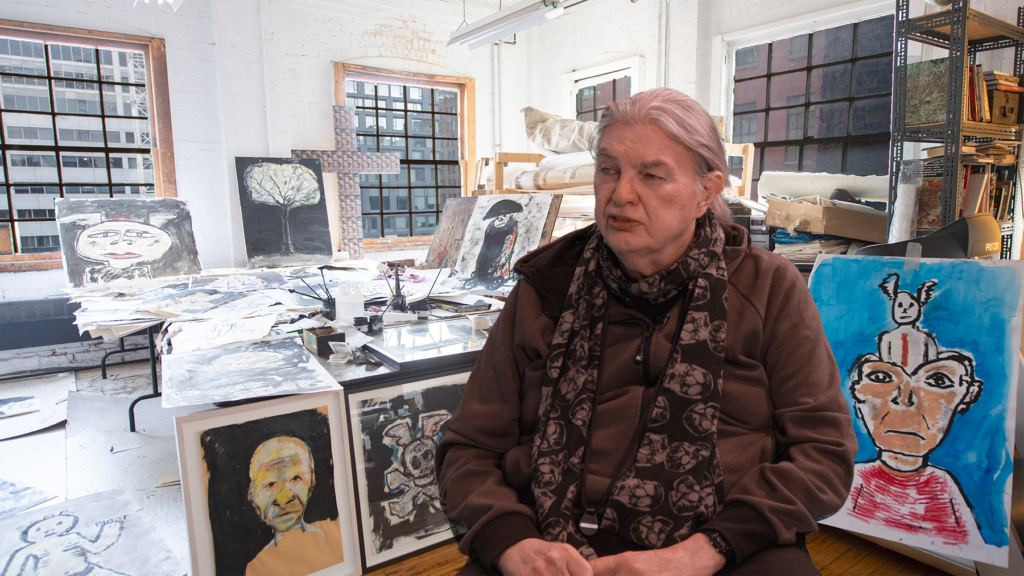
John Scott was born in Windsor, Ontario, Canada, in 1950 and died at the age of 72 in 2022. He was raised in the Cold War era that concerned itself with the imminent threat of nuclear conflict.
A Canadian multimedia artist, Scott, was known for his drawings, paintings and sculpture/installations. His artistic creations have drawn comparisons to those of American artist Jean-Michel Basquiat (1960-1988), who similarly explored themes of mortality, destruction, and the disparity between wealth and poverty. In the wake of Basquiat’s passing and his rise to fame, Scott has been dubbed the “Basquiat of Canada.” It is important to note that Scott, being ten years Basquiat’s senior, had already established his artistic identity well before Basquiat’s initial creations.
Renowned for his compulsive mark-making and ironic wit, Scott was a visionary in the art world. He was a long-standing professor in the Faculty of Art at OCAD University, challenging and inspiring his students to develop their individual creative styles and express their innermost thoughts and emotions through their art. Scott was an influential artist within the Toronto art community from the early 1980 until his death through his iconic, political and accessible work.
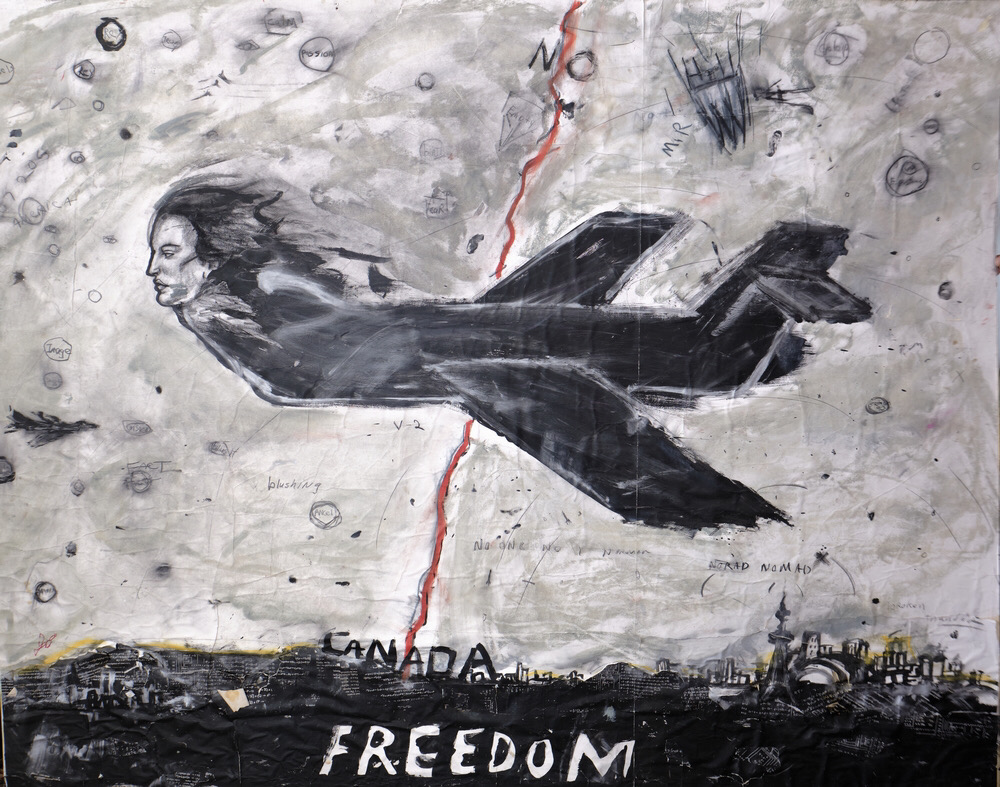
Scott’s paintings and sculptures addressed themes of war, industrialization, authority, social class, and fear. For example, he portrayed fighter planes hovering over a blackened earth, cities detached and cast adrift in space, and strange genetic modifications of life. He depicted scenes of political devastation through representations of “twisters” with evil faces, drones, endless tanks whose purpose is surveillance. His many humanlike figures have large bunny-like ears which portray their vulnerability and sensitivity to larger forces.
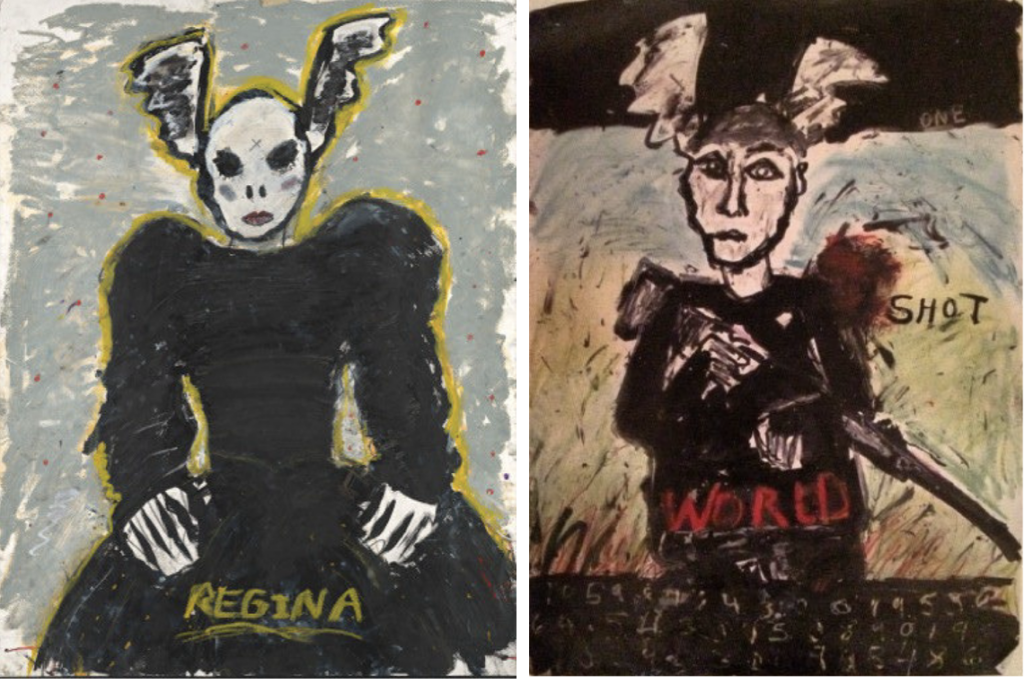
Scott lived in a large messy studio in the urban core. He regarded people that he encountered with kindness and generosity, whether they were homeless or affluent, students or scholars. He lived out his belief that art should be accessible by gifting everyone who came into his space with a personalized drawing, and his artwork is ubiquitous in the homes of the many people who knew him. His work was also accessible in another way: while the subject matter may be complex, and the readings layered, regardless of their knowledge of art, the audience easily “got” his work. Nowhere is this accessibility better evidenced than in his work, owned by the National Gallery of Canada, titled “Apocalypse Trans-Am.” This installation of a 1981 Trans-Am car covered in black paint with the Book of Revelations scratched into the surface was lauded as one of the most popular works in the gallery’s collection.
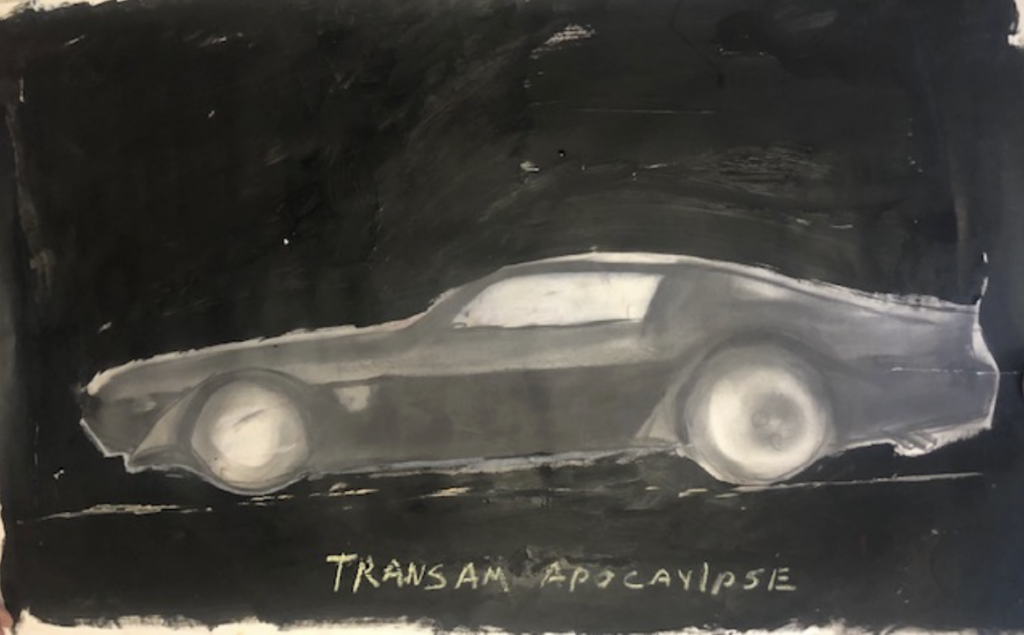
Historically, Scott successfully positioned himself as a prominent artist within the art community, as evidenced by his inclusion in art history texts, museum retrospectives, and various collections and exhibitions. He became the first recipient of the Governor General’s Award in Visual and Media Arts in 2000.
Scott’s oeuvre is characterized by a range of pivotal themes, such as “100 Workers, Carnivore, Teddy-Bear, The Bunny-man, The Dark Commander, Trans-am Apocalypse, Jet Fighters, Watch Towers, Tanks, and culminating in the “Night Sky” imagery, which he produced subconsciously, aware that his time was drawing to a close.
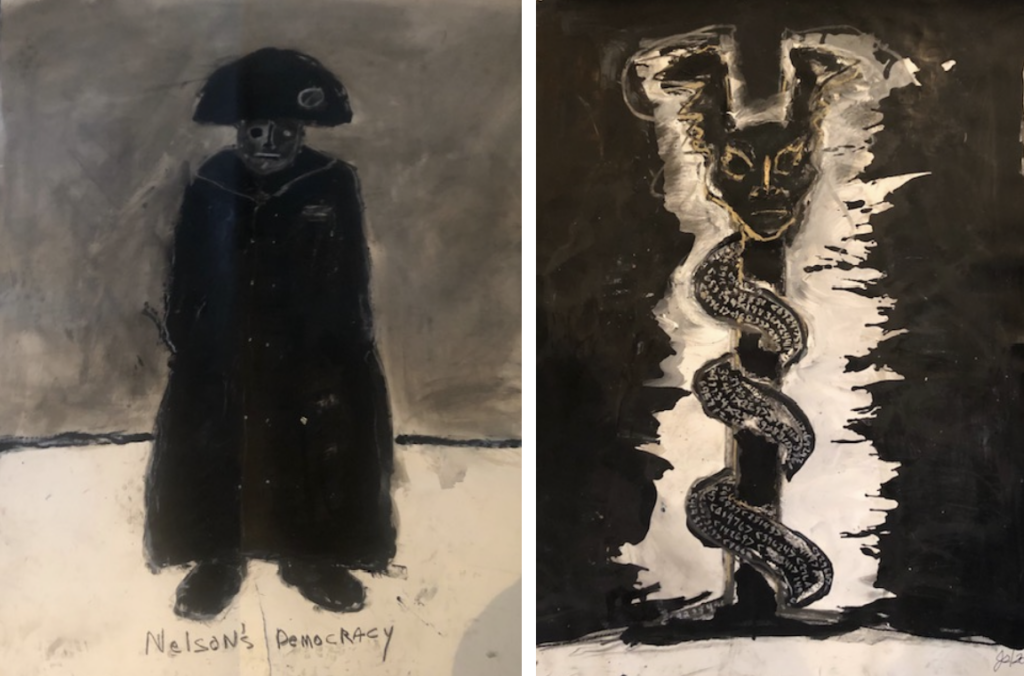
“Fallen Angel, “words written on paper by Scott featured in the McMichael Canadian Art Collection’s exhibition Fire Storm, serves as a profound reflection of John Scott’s personal interpretation of his existence within the world. This exhibition presents a diverse array of his works, spanning from his early career to 2015. Among the highlights are a small plastic maquette for “Trans-Am Apocalypse,” created in 1987, which includes incised text, and “The Conqueror Worm,” a sculpture from 1997 constructed from sheet metal, rubber tires, electronic components, paint, and a metal frame. Currently Scott’s work can be viewed at the McMichael Canadian Art Collection; John Scott: Fire Storm exhibition from December 7, 2024 to May 11, 2025.
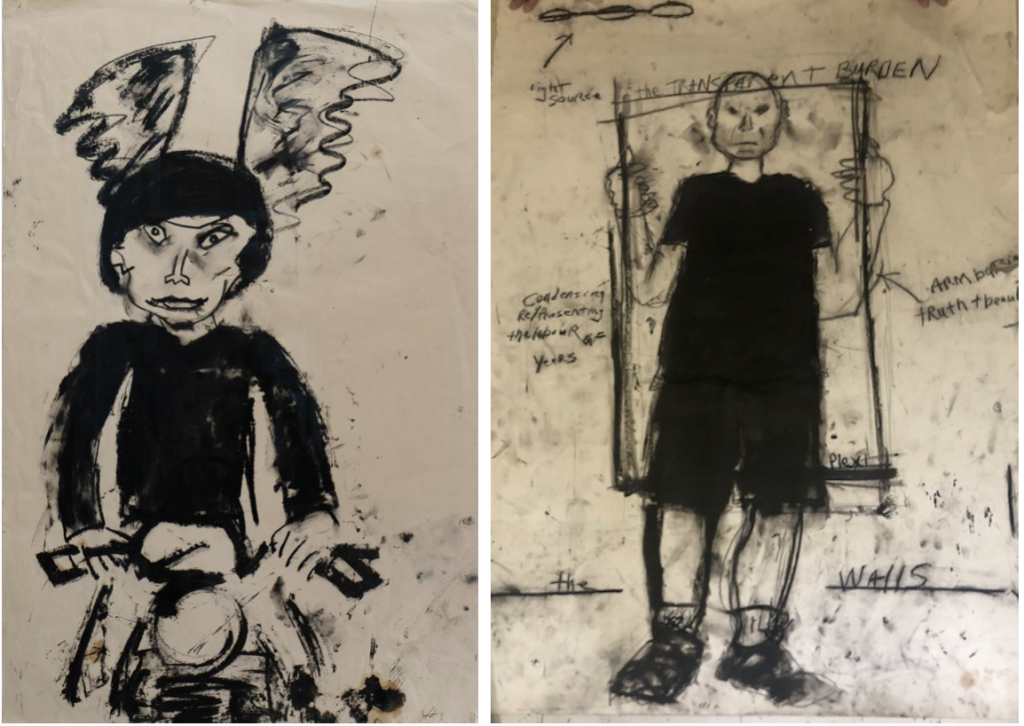
John Scott works are in the collection of the Museum of Modern Art in New York City as well as every major museum throughout Canada from the National Gallery of Canada in Ottawa, The Art Gallery of Ontario in Toronto, The Kitchener-Waterloo Art Gallery, to the Vancouver Art Gallery in British Columbia.
